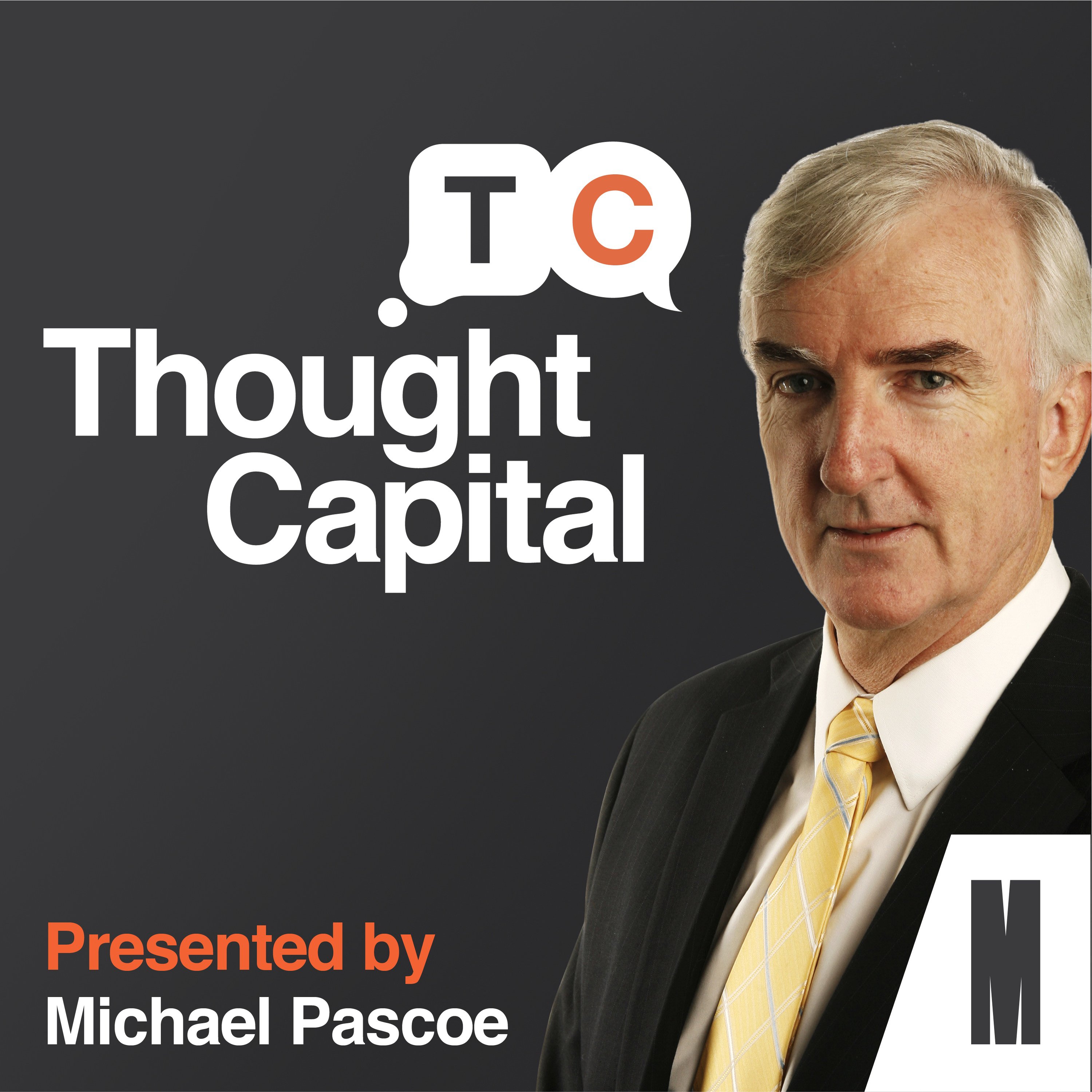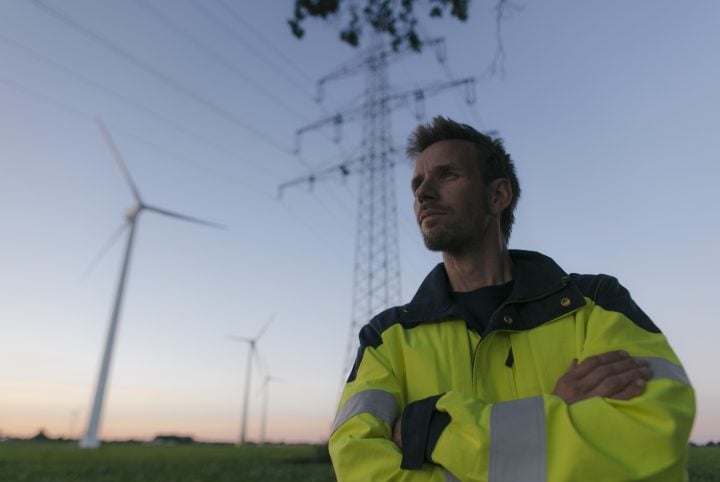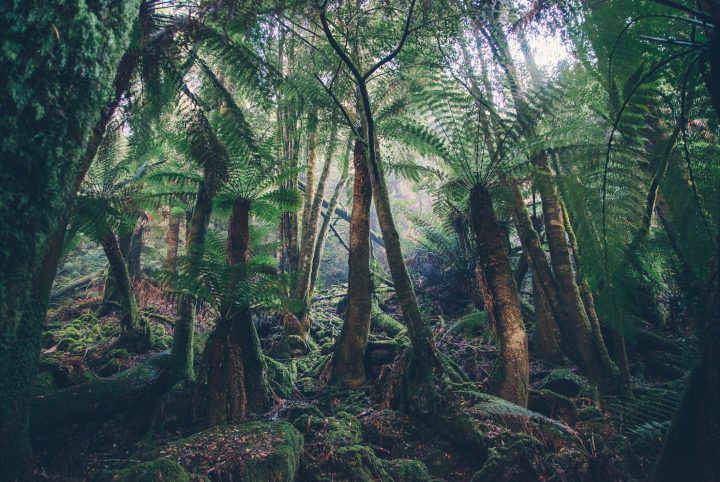The clean economy. Will it be possible or is it a myth we like to tell ourselves. What if we can’t adapt fast enough? Are we going to have to learn to live in a dirty economy?
Michael Pascoe: Well, we ask some of our Monash experts, what they thought about living in a dirty economy. This is what they had to say.
Anke Leroux: It will become more costly. There’ll be more sacrifices to be made. It’s much more expensive to adapt to a place with high degrees of warming, than it is to actually try and prevent these high degrees of warmings.
Guillaume Roger: The option of doing nothing and enduring climate change is extremely costly. If you look at the success of the last couple years in trying to live with a new virus, the transition cost has been absolutely horrendous. Be in health or in treasure. And that’s puny… Puny in comparison.
Diane Kraal: Sure. We might be able to adapt to a dirty economy, but what are the costs? There’s all these externalities of just leaving things as they are.
Helen Millicer: The longer we leave it, the worse and harder it’s going to be. Progressive change is required. We need all parties to the table, and that includes political parties, as well as industry and the community.
Amrik Sohal: I think we all have to have the same vision and seek the same goals. Otherwise, we will be in trouble.
Michael Pascoe: Not a promising future to say the least. Change and adaption are possible and it is happening all the time. It is essential that we build economies that are resilient to global warming. The question is, are we moving fast enough? To discuss adaption to climate change, we’ve invited Associate Professor Anke Leroux, from the Department of Economics, back on the show. The latest global conference on climate change, COP 26 in Glasgow, did achieve quite a few pledges, but how do we turn them into action?
Anke Leroux: If we just look at the pledges until 2030, we are shaving off maybe 0.2 degree celsius of the warming by 2100. And so we are still way above the two degree Celsius target. When we look at the long term targets though, we are getting a bit closer to the below two degrees. So we are looking at 1.8 degrees Celsius warming by 2100. So that’s encouraging, but it’s still well short of the goal of limiting warming to 1.5 degree Celsius.
So that’s the first thing that we need to understand with COP 26. So we are making progress, but we are not quite there yet. So in terms of how we turn them into action, one thing that was achieved under COP 26 was also that the rules about monitoring were agreed upon. So as of 2024, every country now will have to report their emissions regularly and make them known.
Anke Leroux: So that in itself is a mechanism by which countries may feel watched and inclined to really adhere to their pledges. So if we just take that carbon neutral target, then we would expect Australia’s efforts to be mainly around reducing CO2 emissions. One big contributor to CO2 emissions is of course the energy sector. So policies that we hope to see, and that are critical to achieving this, is to find policies that allow fuel switching and facilitate and enable more renewables to enter the electricity grid, for example, and help get coal out of the equation.
Ideally though, we would like to also focus on other greenhouse gases, not just CO2. And for that we really need to look at other sectors such as agriculture, land use, the waste management sector and so forth, because that’s where we see a lot of methane emissions.
Anke Leroux: This is a much more potent greenhouse gas and is already accounting for about two thirds of the radiative forcing that we see from CO2. Many of the pledges that we see may not come to fruition because low income countries depend on richer nations to fund their efforts. Also, we do know that we need to do more.
So even if all conditional and unconditional pledges are adhered to and long term targets are met, we won’t keep warming below 1.5 degree Celsius. So my hope is that for the next revision of pledges in five years time, we will see much more ambitious action still.
Michael Pascoe: What was your major takeaway from COP 26? How are we adapting to climate change in the meantime?
Anke Leroux: We are already seeing quite wide-ranging adaptations to climate change in the government sector, but also their businesses and individuals. For example, the government sector may invest in the readiness to reduce demand during periods of low supply in the water sector via pricing policies, or they might just invest in augmentations of water supply. We see a lot of investment in water recycling, the capture of urban water runoff and desalination, for example. Also, when it comes to sea level rise, we see governments building structures, such as sea walls to predict buildings and infrastructure.
But often also what is needed is to allow for a soft adaptation. For example, to conserve coastal habitat and ecosystems. And that just means that we allow the beach or the marshlands to retreat inland. So we see quite a bit of that happening. Also, businesses, especially farmers come to mind, they are very good at constantly adapting to change conditions.
Anke Leroux: So they might be experimenting with new crop varieties, planting dates or changing the mix of their farm businesses. And of course from an individual point of view, more and more people build their homes to be more energy efficient and better suited to future climate conditions. So as to reduce the need for cooling and heating, for example. So a lot of things are going on when it comes to adapting to climate change, but this is really tinkering at the margin.
So if it’s small amounts of changes to climate, we are very good at adapting, but when it comes to large scale, catastrophic changes, adaptation won’t do the trick. So we really need to avoid those large scale changes happening because they will become so costly and we won’t be able to adapt in any meaningful ways. So we will face real costs from climate change if it goes beyond a certain threshold, which most scientists believe is around 1.5 degree Celsius.
Anke Leroux: We need a host of existing, emerging and new technologies and solutions across a wide range of sectors that target CO2, but also other types of greenhouse gases. For example, when we look at the energy sector, this is focused on CO2 now, and read the reports by IRENA… So the International Renewable Energy Agency and IEA, the International Entity Agency… These reports tell us that we already have the technological solutions available to us. And these are mainly fuel switching.
So we have access to renewables, not just for the electricity sector, but also in terms of producing green steel with hydrogen or hydrogen powered cars in the future… Bit further off still but the technologies are there. Also a large proportion of the reduction in CO2 emissions will come from further efficiency gains. Using less energy more efficiency. And then we have more short term implementations like carbon caption and storage, which many are arguing perhaps less perfect.
Anke Leroux: So given the fast pace of technological change, I think it would be almost the impossible to hand people specific technologies that will get us to below 1.5 degrees Celsius over the short, medium and long term at the lowest cost. So I don’t think picking technologies is the way to go. Also, we see, and we hope to see many more technologies emerge in the future in other sectors as well. So I think we should be agnostic, but we do need policies that allow for fast change to happen.
Michael Pascoe: Climate change is not waiting for politics and policies. It’s already affecting large populations and a range of industries. Agriculture is in the front line. An industry hard pressed to constantly change and adapt. Farmers are in constant contact with the reality of climate change. There are no climate denialists in the wine/grape industry, for example. But having to change your preferred grape variety or getting used to the best sparkling wine not coming from champagne is one thing.
Not having enough wheat is another altogether. Professor Sisira Jayasuriya is a development economist with a focus on economic policy issues in Asia. His current research though, is concentrating on one of Australia’s major wheat growing regions. Professor, welcome to Thought Capital. You’re working with a team of economists, econometricians and a climate scientists on Northwest Victoria. What did you find?
Sisira Jayasuriya: So we looked at 10 different scenarios. The most likely scenario seems to be what they call a ‘hotter and dryer’ scenario. So, what we found was that the conditions will become more challenging for wheat in Australia overall. It’s possible that wheat yields in parts of the Northwest Victoria, in Mallee, could call up to 30% on average, particularly over the next 45 years. And in Wimmera, by up to 20%.
Michael Pascoe: So what would that do to the viability of the farms to lose that much crop?
Sisira Jayasuriya: Farmers have been adapting to all kinds of changes over the last hundred-odd years in this part of Australia. And these guys are really quite dynamic, really up with it. They know what’s happening in the world. They know what’s happening in their own environment. And they’re really looking at what they can do to make sure that the viability of their farming is maintained.
They have a range of options available. So in terms the wheat crop itself, they can change varieties, they can change sowing dates, they can change the method of cultivation, how they peel the soil to retain moisture or to allow for greater seepage… All kinds of cultivation practices that farmers used. And over the next period, assuming that we would continue to have places like CSIRO, scientists generating new techniques of cultivation, new varieties better adapted to dry conditions and so on… They would have adaptation possibilities within wheat itself. And secondly, farmers have also the choice of changing the enterprise mix within the farm.
Sisira Jayasuriya: We have already seen this, particularly in Mallee… That even though we say these are wheat farms, actually many farms in Mallee, they’re already getting something like 50% of their farm revenue from non-wheat enterprises, live-stock as well as other crops. So farms have been actually shifting to entirely new crops, such as spices for the Indian market, which they had never done historically.
Michael Pascoe: So the farmers can adapt, can diversify, can change crops. What does it do to the customers though, if we are growing less wheat in this country? Do we have to get used to a change of diet?
Sisira Jayasuriya: We may need to change our own diet in Australia. But if Australian wheat crop goes down… Because Australia’s a significant exporter of wheat to the world, then that will have an effect on global food supplies.
Michael Pascoe: What do we need to do to help farmers to adapt?
Sisira Jayasuriya: What they really need is help with the things that they can’t do by themselves. And one is research, the kind of research that is done by bodies like CSIRO. Where the scientists do all kinds of fancy things, developing new varieties, using fancy techniques, manipulating genes in the crops and so on. So that they can develop better, more adapted varieties of wheat and other crops and some of the cultivation practices. The farmers will then take these things, do their own on-farm experimentation to check which ones work out under their own conditions. So continuing investment in public research is really essential.
They rely a lot on weather forecasts. That Bureau of Meteorology is something that they access all the time. Not only for long term forecast, they actually follow a lot of the global forecast, but they need regional… Really sub-regional forecast.
Michael Pascoe: What are some of the spillover effects to other industries that you see from the impact on farming?
Sisira Jayasuriya: Financing. We are going to have a lot more volatility. Which means that even though overall, farms may be able to retain their profitability on average, they may be hit by periods of prolonged droughts and extreme events like floods and things.
Which will mean that they could be squeezed for liquidity. They may be viable in the medium term, but they may not have the cash flow for periods of time which cannot be anticipated fully. So from time to time they may need emergency assistance. It’s not that farmers will need to be subsidized forever, or they need handouts as such.
But from time to time, they would need a helping hand to tide them over periods of really bad times that could come up. And that kind of thing is going to happen. So, the insurance industry, the banks and governments should all be prepared for this kind of situation.
Michael Pascoe: Anke, you are also involved in this research project. What do you think it teaches us about how we approach the future?
Anke Leroux: I think it teaches us that we should be as forward looking as possible. So it’s to be able to plan ahead and then work out plan B’s if the climate future eventuates. Now, it’s very important to get localized information provided by the government of what particular climate change impacts may look like under various climate change scenarios. So that’s a critical input if we want to be forward-planning. Adaptation is critically important and that we, as a species, are very good at it. So we found quite significant reductions in projected meat yield for example, and at climate change. But the effects on farm profitability were a lot more nuanced.
Michael Pascoe: Adaption to climate change needs to happen across business, industry and society. What will it mean for us all?
Anke Leroux: Really adaptation actions could be undertaken by governments in terms of investments in infrastructure. But governments also have a role in facilitating and in encouraging adaptations by businesses and industry and individuals. So, they should provide localized information of future climate impacts that allow these decisions to be made. They might introduce pricing policies, for example, to introduce water conservation in times of shortages and so forth.
They would introduce things like building standards for climate sensitive homes and buildings, or zonings that take into account sea level rise and flood risks. This is what the government can do. But of course there are many examples of us individuals adapting without any input by government, simply because we are made aware of the risks and we take them into account when we make large investments. Any adaptation, whether it’s undertaken by individuals, businesses or by government, however, should really look at the benefits and costs.
Anke Leroux: So, what will be the impact and its costs if we don’t do anything from climate change? Then, how much would it cost to reduce this impact through adaptation? And then, how much will be the residual climate impact after the adaptation has occurred? If we compare the cost of living with climate change… Even if we adapt optimally with the cost of reducing emissions now… It is much much more cost effective to reduce emissions now and to avoid warming above 1.5 degree Celsius. We can adapt at the margin, but adaptation by itself, won’t help us with the large scale devastation.
Michael Pascoe: Anke Leroux, thank you for talking to us again.
Michael Pascoe: Thank you for listening to Thought Capital from Monash Business School. I’m Michael Pascoe. This podcast was written and produced by Tina Zenou, editing by Nadia Hume. Our executive producer is Helen Westerman.




